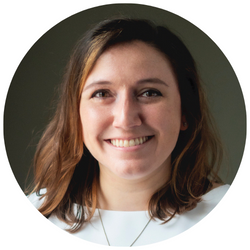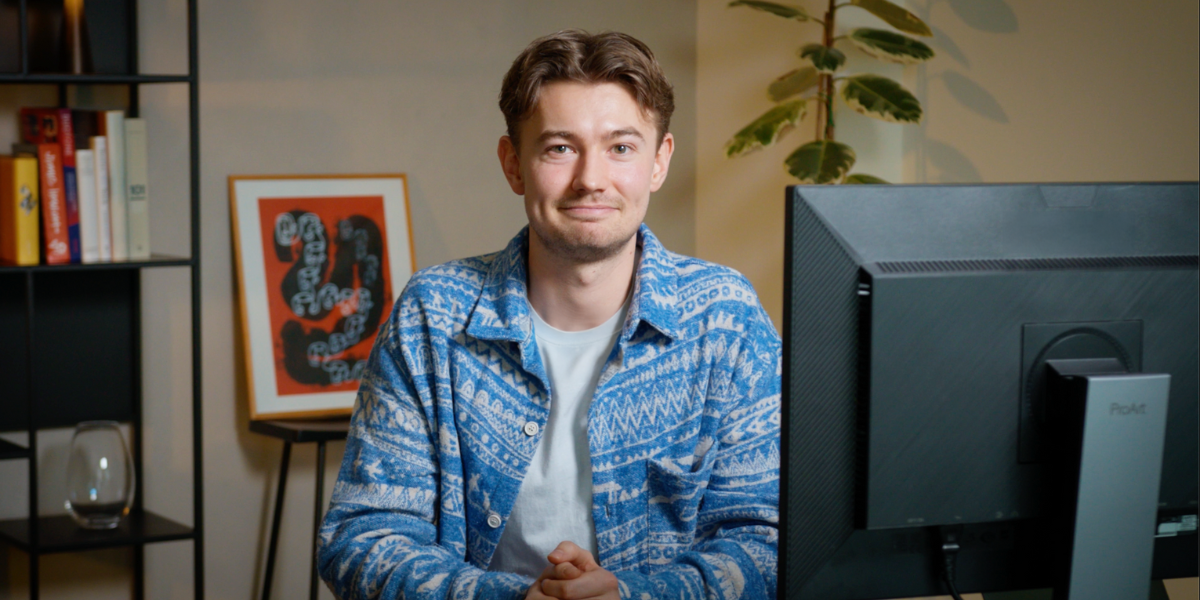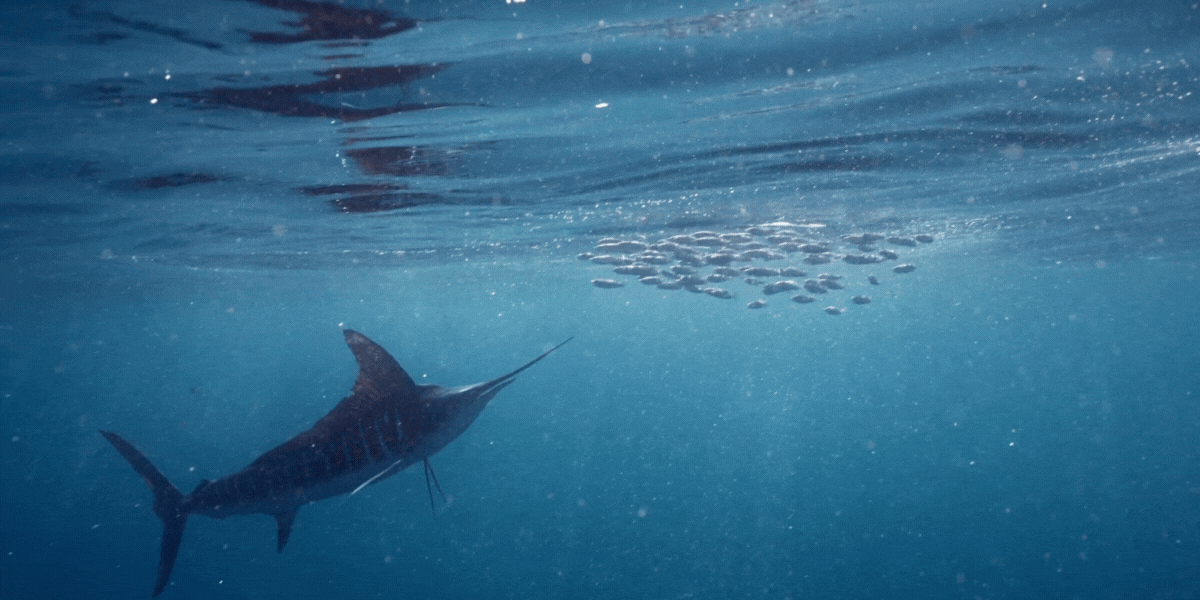Commercial producer Reese Hopper has been freelancing long enough to know all about the ups and downs of making a living off your creative skills.
As a freelance producer, he spends his days making social ads, commercials, and content for TV and streaming platforms. He also diligently records everything he learns about selling your creative skills and shares these lessons with his eager followers.
Because even though working for yourself sounds like a creative’s dream, it comes with its own risks, difficulties, and financial concerns.
So why does Reese insist that everybody should learn to freelance?

ANNIE COSBY: OK, first things first: Is it really that perfect? Why do you say everyone should learn to freelance?
REESE HOPPER: Oh, you can read many of the tough stories in my book, What Gives You the Right to Freelance? I've definitely had an up-and-down relationship with it. I think most people do. I'm never going to say it's the easiest or greatest thing ever.
But it always was an option. It was always a pathway for me to make money. And that's what's really exciting.
Initially, straight out of college, I applied for some jobs, and I didn't get them. But I needed to make money, and I had some creative skills, so I figured I could go direct to people who needed those skills.
I started freelancing as a social media manager. I would go to small businesses or small brands, even bands or whatever, and pitch them my services. That's how I first got into it.
As time has gone on, through the various ups and downs of the economy that we've seen in the past eight years or so, I've seen a lot of friends with really good, steady jobs get laid off by these big, great companies. And these friends are kind of thrust into a tailspin because they don't have the skills to go and make money for themselves. They have to get back into this — what is often a dehumanizing and grueling job application process to try to make money again.
That's when I started to realize that freelancing is such a gift, and it's a great skill set to have because it's always in your hands.
If you are a creative person or you are a person who can help a business solve a problem, it's always in your hands to be able to make at least a little bit of cash.
If you are a creative person or you are a person who can help a business solve a problem, it's always in your hands to be able to make at least a little bit of cash.
So, for me personally, as I've grown to love and appreciate it, I started to want to spread the word to as many people as possible.
That's the deeper sense of my mission. I really think everyone should be freelancing in some capacity.
AC: Even if you currently have a job?
RH: Yeah, just dip your toes in. It doesn't have to be full-time. You can keep a full-time job.
But so many of us have these skills that we can use to make a few hundred bucks here or there. And it's a powerful skill to know how to leverage that.
AC: Because the day may come when you need to leverage that. I guess it is the ultimate safety net.
RH: Definitely. But it's not only helpful in times when you're not working, it's always helpful to be able to make a few hundred bucks on the side. Like when Christmas is coming up or I want to go on that trip but maybe I can't quite afford it. What if I can log a couple of projects on the weekend and we can make it happen?
So I think it's a very empowering process. For me personally, it has increased the quality of my life in a rich, deep way. And I think it can for many other people as well.
AC: I think people, especially writers, have this kind of dreaminess about freelance work, which we tend to see as doing what you love every day, all day. Does that change when you're under pressure and your paycheck is totally dependent on your passion?
RH: There's definitely a misconception when people get into doing their creative discipline full time that it'll be really easy and wonderful. But the reality is creativity and creative endurance is a muscle that you have to build up over time.
I was always someone with big ideas, and I've always loved working on social campaigns and building strategies, but for most of my life, I had only done that for a maximum of, maybe, one to two hours a day, throughout the course of school and college.
So when I got into the working world, it was like, okay, I have to book this number of clients to pay this much to pay my bills. And I realized I didn't have the creative stamina to be working a full creative schedule. But I needed to work eight hours to be able to pay my rent and bills.
So, yeah, in those early days of freelancing, I definitely bit off more than I could chew. And there were some late nights just grinding, making it happen. But I look back fondly on that because I know now that those were the moments when I really took a leap forward.
That was a hard lesson I learned early on. And people who don't work in a creative zone are always like, "Man, you have it so good! You just get to make stuff all day."
I'm like, "No, that is hard, hard work."
The reality is creativity and creative endurance is a muscle that you have to build up over time.
AC: That endurance is definitely a thing writers struggle with. I'll say, Oh, I could finish my book if I just had eight hours a day to write! And then I get a week off from the day job and write, like, 200 words total.
RH: Yeah, and then you're so burned out and the ideas suck and you get discouraged.
It's not a you thing. It's just a creative muscle that you have to work at, just like anything.
AC: So how do you work that muscle? How do you train it?
RH: Experience. Just do it. The 15 minutes you have today, the 30 minutes you have after work or at lunch or after the kids go to bed — whatever it is. That's what you need to start with, to start building up that endurance.
Getting enough project work will force you to do it, too. Then you have to produce, and you have a deadline. With each project, there are a lot of learnings and gains.

AC: OK, so say I've decided to freelance. What is the hardest part — what should I focus on first?
RH: For many people, the hardest hump to get over is learning how to pitch. The only difference between a professional and a hobbyist is that the professional is the one who decides to pitch.
The hobbyist could be exponentially more talented or artistic, but the professional gets out there and says, hey, I have an offering. You can buy it. Let me help you.
And it's really difficult for a lot of people, especially in Western culture, I think, because it's not something that we do all the time. We don't negotiate often. We don't barter. In many ways, our culture and society has been designed to have us do that as little as possible.
But in this creative world, there's a ton of pitching and negotiating. And that's just a skill that a lot of people haven't learned.
And it is nerve-wracking to get over at first. I mean, public speaking is still like one of the top fears. So I get it.
AC: That would definitely be one of my weaknesses.
RH: And, you know, freelancing is really challenging in so many ways because it exposes you. It exposes the things that you are bad at — which is different for everybody.
Some people might be really good at budgeting, some are really bad at it. Freelancing will expose that.
Some people might be really good talking to strangers, some are bad at it. Freelancing will expose that.
Freelancing is really challenging in so many ways because it exposes you. It exposes the things that you are bad at — which is different for everybody.
AC: That's true. It's so much less structured than a regular job.
RH: Yeah, the traditional path has a lot of padding on the walls. A traditional 9-5 job has a lot of aspects figured out for you: your income is set; your taxes are pulled out of your paycheck; you have sick days, paid time off. Depending on the job, of course. But these are all padding designed to make the working world easier.
And I'm not bashing these at all. These are awesome, amazing things that haven't always been part of American life. These are great things that protect everyday people all the time. Right?
With freelancing, there are so few of those pads. If you get sick and you have a deliverable due, you have to figure out what to do. If you want to take a vacation, you're not going to be getting paid for that. There are all these different things that you have to figure out, and it challenges you in so many ways.
You'll bump into those walls. You'll get some bruises. And you'll learn some lessons the hard way.
But the beautiful thing is it will force you to grow in so many ways and so many spaces that you might not have otherwise.
The beautiful thing [about freelancing] is it will force you to grow in so many ways and so many spaces that you might not have otherwise.
AC: What's your #1 piece of advice for somebody thinking about freelancing?
RH: Ask yourself, What would you do if you couldn't succeed? This is the first chapter of my book.
Everyone asks, What would you do if you couldn't fail? The trouble for creative people is we're too creative. We want to do a million things, and we can't pick one.
Instead, ask yourself: What would you do if you couldn't succeed? What would you do if the best you could hope for is to be average? To make a medium salary for a medium amount of notoriety? What is that thing you would still be doing? What's the thing you'd be doing for free anyway?
That's the thing you should hone in on as your freelance offering or as your creative discipline, because that's the thing that you're going to be motivated to work on, even through those early dips, when nothing makes sense and no one's picking up the phone.
AC: So people can find more of this advice in your book?
RH: Yes, What Gives You the Right to Freelance? helps people overcome their mental blocks and find work-life balance in freelancing so they can achieve the career of their dreams.
It's broken up into five main sections: getting started, pitching, doing the work, client care, and work-life balance. It has a lot of stories from my journey so far, and helpful lessons that I've learned, the easy way or the hard way.
Find What Gives You the Right to Freelance? by Reese Hopper on Amazon or therighttofreelance.com.
Follow Reese on Instagram or visit his website for more info.




























